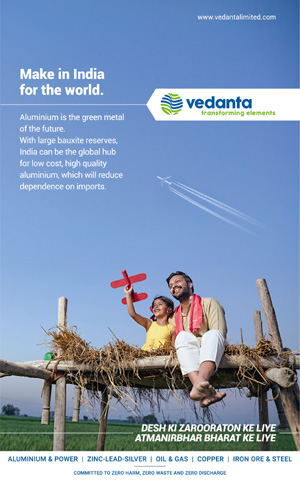India must harness more clean energy from hydro power

Padmashree Prof. Dr. P. K. Jena
India with rapid progress in its industrial and socio-economic developments needs more energy. In view of this, the energy demand in the country is constantly increasing and at present, the fossil fuels like coal, oil, petrol, diesel etc. are meeting most of this.
Nearly 62.7 per cent electricity is obtained from fossil fuels and it is expected that energy demand of the country will be more than double by the year 2030.
With limited reserves of fossil fuels and increasing cost, every year India is spending large amounts of foreign exchange to purchase these. At the same time, due to burning of these fossil fuels, large amounts of green house gases like carbon dioxide, oxides of nitrogen and sulphur are being released to the atmosphere causing a lot of pollution problems and global warming.
According to key world energy statistics in the year 2019, India generated 1561 trillion watt hours (TWh) of electricity and is the 3rd largest producer of electricity in the world after China and USA. With limited resources of fossil fuels, along with increasing demand of electricity, the government of India has targeted to increase the generation of renewable energy of 175 GW by 2022 from hydro power, solar, wind and bio-products.
In this context, the generation of electricity from hydropower which is quite abundant in the country, is necessary.
At present, India is the 5th largest producer of hydropower in the world with an installed capacity of 45,699 MW in the year 2020. However, hydropower contributes only a small fraction (12.4%) of the total installed capacity in the country, indicating that there is a great scope to produce a large amount of electricity from this.
At present, the tendency all over the world is to avoid large hydropower in view of high cost in construction, opposition by people living in the area and having cultivable lands, frequent silting and flooding of the dam, desertification, rehabilitation of displaced families, adverse effect on environment etc. Therefore, in recent years efforts are being made to develop small hydropower for electricity generation as these are usually much less costly to construct, free from frequent maintenance, sustainable and environment friendly. Unlike large hydro powers, these are long lasting and also exempted from forest and land clearance and rehabilitation problems. Further, small hydro powers are ideal to power villages and isolated places including mine areas. As a result, accessibility to electricity results in boosting the socio-economic developments of the region.
Recent survey indicates that, there are 7133 hydro power sites on various rivers in different parts of India with approximate potential of 21.13 GW. Out of these, by the year 2019, only 1127 small hydropower units contributing 4672 MW are functioning and another 109 small hydropower units are in process of completion with a capacity of 529 MW. These figures indicate that, presently only 17% of the potential of small hydropower is being harnessed and thus there is a large scope to develop the rest hydropower units.
However, past experience showed that, because of faulty decision to select the proper site, size of the unit, purchase of generating equipments, many small hydropower units in India have been scraped. Many small hydropower units have also been scraped due to low consumption of electricity and limited funding from government in terms of maintenance cost. In order to make the functioning of small hydropower units successful, besides proper planning, the best available technology has to be utilized and well trained personnel to be employed. In India, small hydropower units have been classified into four subgroups.
Hydropower up to 5 KW is called Pico
Up to 100 KW is Micro
Up to 101 – 2000 KW is Mini and
2001 to 2500 KW is Small
There are more than 400 rivers in India. The total length of India’s coastline is 4517 Km. In addition to these, the country has got a good number of waterfalls and 46 number of wetlands as recognized under 1971 Ramsar Convention. In these water bodies a detail survey should be made to locate suitable sites for setting up more small hydropower units.
At present, the state of Karnataka has the highest installed capacity of 1281 MW followed by Himachal Pradesh and Maharashtra with 907 and 380 MW electricity respectively. The states in north and eastern region of India have high potential for installing small hydro power units. In addition; efforts should be made to develop and standardize harnessing hydro power from sea tides and waterfalls. At the same time, the four types of hydro power systems namely run-off river hydro power, storage hydro power, pumped storage hydro power and off shore hydro power have to be taken into consideration, so that at different water bodies appropriate hydro power systems can be identified and installed.
Out of all renewable sources of energy, the small hydropower is most efficient, practically free from environmental pollution and socio economic obstacles. Because of better available technology, India should put up more small hydropower units as large hydropower units have got many socio-economic problems. With huge hydropower potential in the country specially in the Himalayan states as well as in the coastal region, selection of proper sites and setting up small hydro power units using best available technology, should receive high priority. In this way it would be possible to meet the increasing energy demand in the country in an environment friendly manner.
(The writer is former Director General, Council of Scientific & Industrial Research, India. He is at present Chairman of Institute of Advance Technology & Environmental Studies (IATES), Bhubaneswar. He can be reached at prof.pkjena_iates@yahoo.com)






